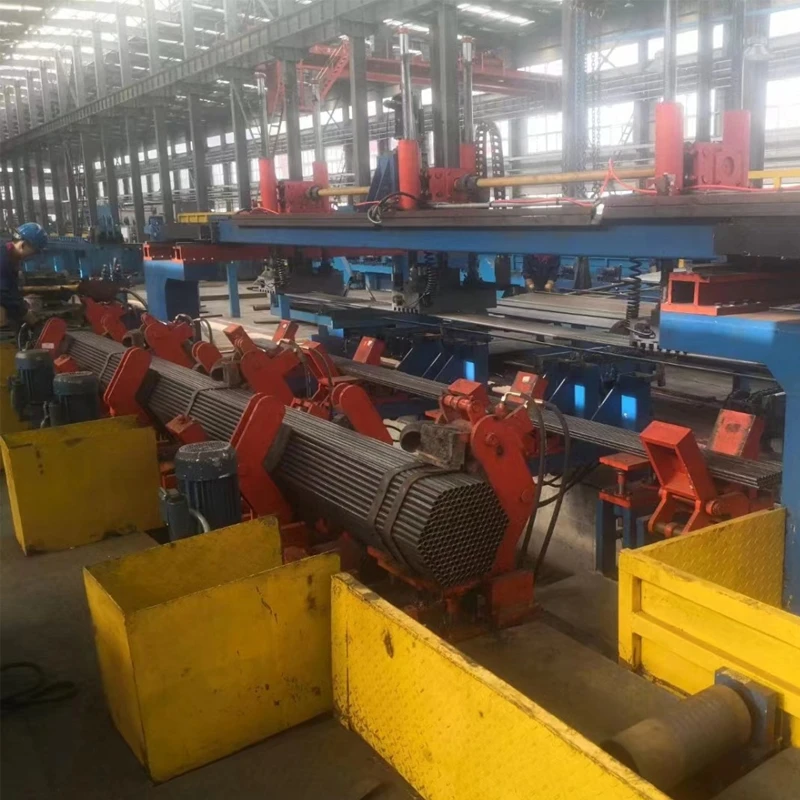metal stud roll former
The Versatility and Efficiency of Metal Stud Roll Formers
In the realm of modern construction, metal stud roll formers have emerged as indispensable tools, significantly transforming the way structural frameworks are constructed. These machines are engineered to produce metal studs, tracks, and various other profiles from coil stock, showcasing an impressive blend of efficiency and versatility that meets the evolving demands of the building industry.
Understanding Metal Stud Roll Formers
At its core, a metal stud roll former consists of a series of rollers that shape a flat strip of metal into a specific profile. The process begins with a coil of steel or other metals fed into the machine. As the material passes through a series of rollers, it is gradually formed into the desired shape—often resembling a U or C channel—commonly used in lightweight framing systems. This continual shaping process is capable of producing lengths that can be cut to size, making the system adaptable for various construction requirements.
Advantages of Metal Stud Roll Formers
1. Cost-Effectiveness One of the primary advantages of using metal stud roll formers is their ability to significantly reduce production costs. Traditional methods of manufacturing metal studs often involve time-consuming processes that increase labor and material costs. Roll formers streamline production by automating much of the work, allowing for bulk production without sacrificing quality.
2. Precision and Consistency Roll forming ensures that all metal studs produced are uniform in size and shape, which is crucial for structural integrity. The precision of the process minimizes waste, as excess material can be trimmed off easily, leading to consistent quality across all products.
3. Lightweight yet Durable Metal studs are lighter than traditional wood framing, which not only makes them easier to handle but also lessens the load on a building's foundation. Despite their lightweight nature, metal studs offer exceptional strength and durability, resisting warping, pests, and rot—common problems associated with wooden framing materials.
metal stud roll former

4. Design Flexibility Metal stud roll formers can create a wide variety of profiles depending on the specific needs of the project. This flexibility allows architects and builders to explore innovative designs while maintaining structural integrity. From simple frames to complex architectural designs, roll formers can accommodate a range of applications.
5. Eco-Friendly Option Using metal studs in construction contributes to sustainability. Metal is a recyclable material, and many roll formers operate using recycled steel. This characteristic not only reduces waste but also aligns with the growing trend of green building practices.
Applications in Construction
The applications of metal stud roll formers are vast. In commercial construction, metal studs are frequently used for framing walls, ceilings, and partitions. Their resistance to fire and pests makes them ideal for a variety of settings, from offices to schools and hospitals. In residential construction, they provide a lightweight alternative for framing and can also be utilized in creating durable, elegant finishes.
Moreover, with the rise of modern design aesthetics, metal studs are unfolding new possibilities in interior design. Their clean lines and contemporary look are appealing in spaces that aim for a minimalistic, industrial vibe.
Conclusion
Metal stud roll formers represent a significant advancement in building technology, offering a combination of efficiency, precision, and flexibility that traditional construction methods struggle to match. As the construction industry continues to evolve, these machines are likely to play an even more crucial role, paving the way for innovative designs and sustainable building practices. As builders, architects, and designers lean into the capabilities provided by metal stud roll formers, we can expect a future where construction is not only faster and more cost-effective but also more environmentally responsible and adaptable to the creative visions of the modern age.
-
High Frequency Straight Seam Welded Pipe Production Line-BzZhou Xinghua Machinery Equipment Manufacturing Co., LTD.|Precision Welding, High EfficiencyNewsJul.30,2025
-
High Frequency Straight Seam Welded Pipe Production Line|BzZhou Xinghua|Precision Welding&EfficiencyNewsJul.30,2025
-
High Frequency Straight Seam Welded Pipe Production Line - BzZhou Xinghua|Precision Engineering&EfficiencyNewsJul.30,2025
-
High-Frequency Straight Seam Welded Pipe Production Line-BzZhou Xinghua Machinery Equipment Manufacturing Co., LTD.NewsJul.30,2025
-
High-Frequency Straight Seam Welded Pipe Production Line-BzZhou Xinghua Machinery Equipment Manufacturing Co., LTD.|Precision Manufacturing, High EfficiencyNewsJul.30,2025
-
High Frequency Straight Seam Welded Pipe Production Line-BzZhou Xinghua Machinery Equipment Manufacturing Co., LTD.|Precision Steel Pipe Manufacturing&Industrial EfficiencyNewsJul.29,2025


